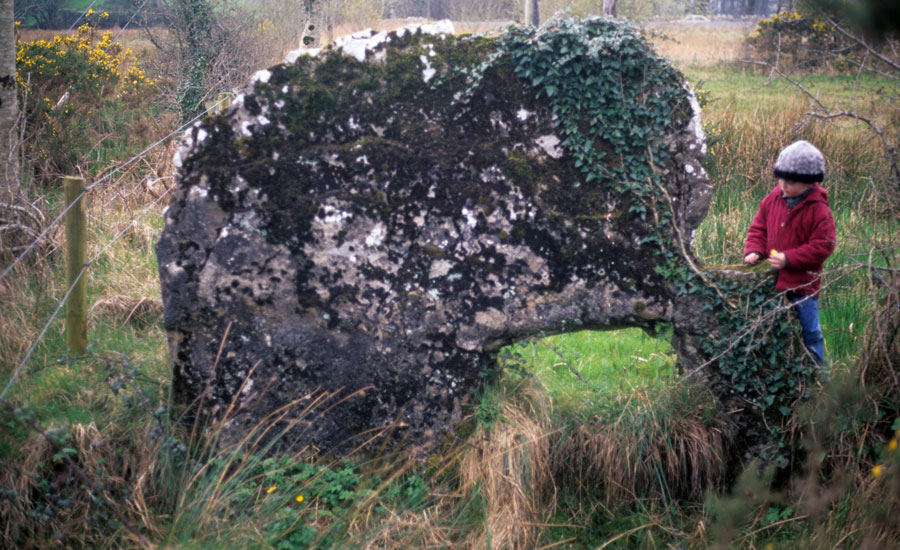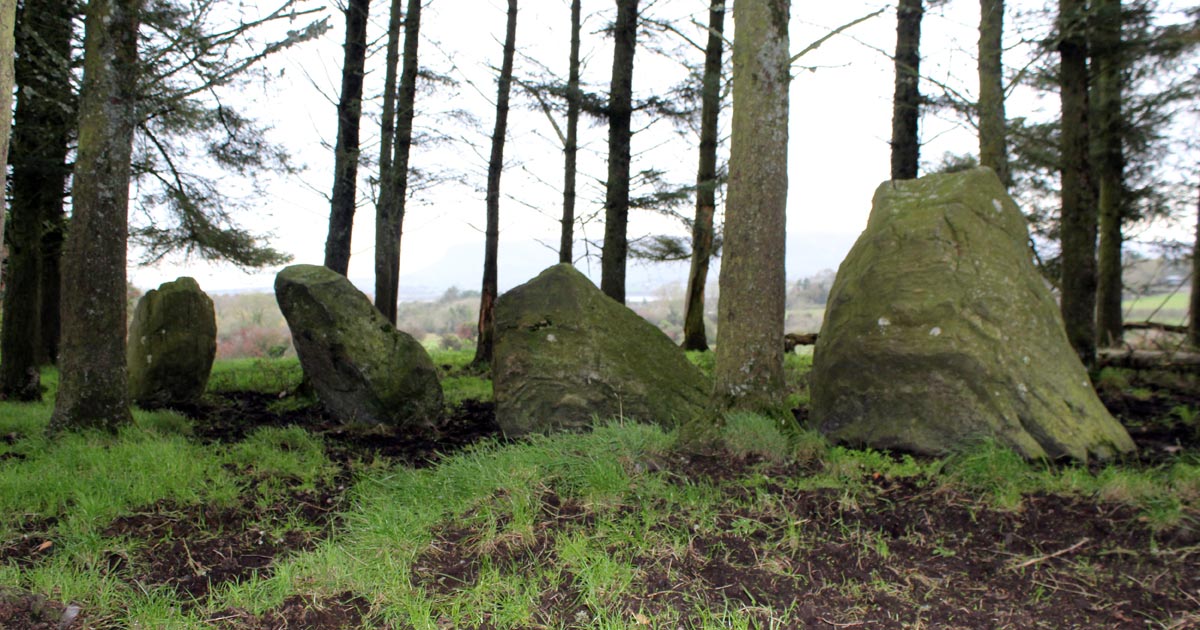Tobernaveen - An Cloch Breac
A little to the south of this boundary stone is a remarkable well, or spring, called Tobernaveen, Tobar-na-b-Fian, the Well of the Warriors, perhaps in allusion to the combatants having there slacked their thirst after the battle of Carrowmore.
W. G. Wood-Martin, History of Sligo.
The Speckled Stone at the Well of the Fianna stands at the boundary of three townlands (one of which, Tobernaveen is one of the names the stone is known by), a little over rwo kilometers north of the vast Carrowmore megalithic complex. The stone is believed by some to have been taken from a destroyed monument during bronze age reuse of Carrowmore and other local monuments. The Tobernaveen stone is a huge, flat slab of limestone about three meters square, standing on one edge about 30 centimeters thick, with an unusual rectangular hole cut through about a third of the way up from the ground.
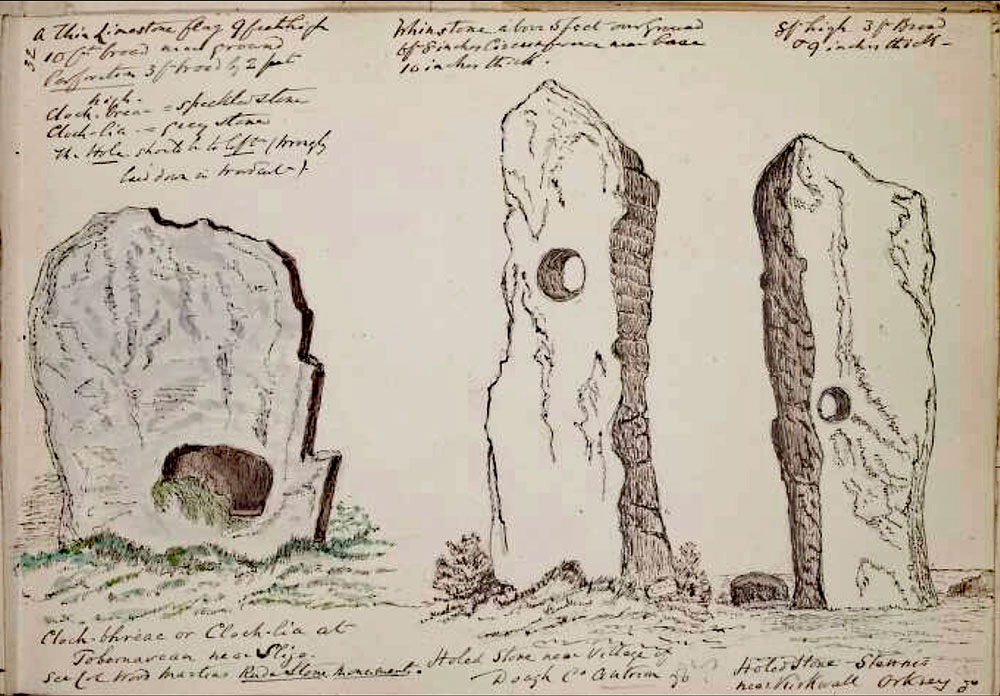
Local traditions say that at times in the past sick children were passed through this hole as a cure for various ailments. This is a belief commonly associated with such holed stones, which were also used for hand-fasting ceremonies. It is likely to be a very ancient boundary marker, pin-pointing the place where the three townlands meet. The fact that the stone–which is virtually inaccessible today–was illustrated by Wakeman, Welsh and Green shows that it was certainly easy to access in Victorian times.
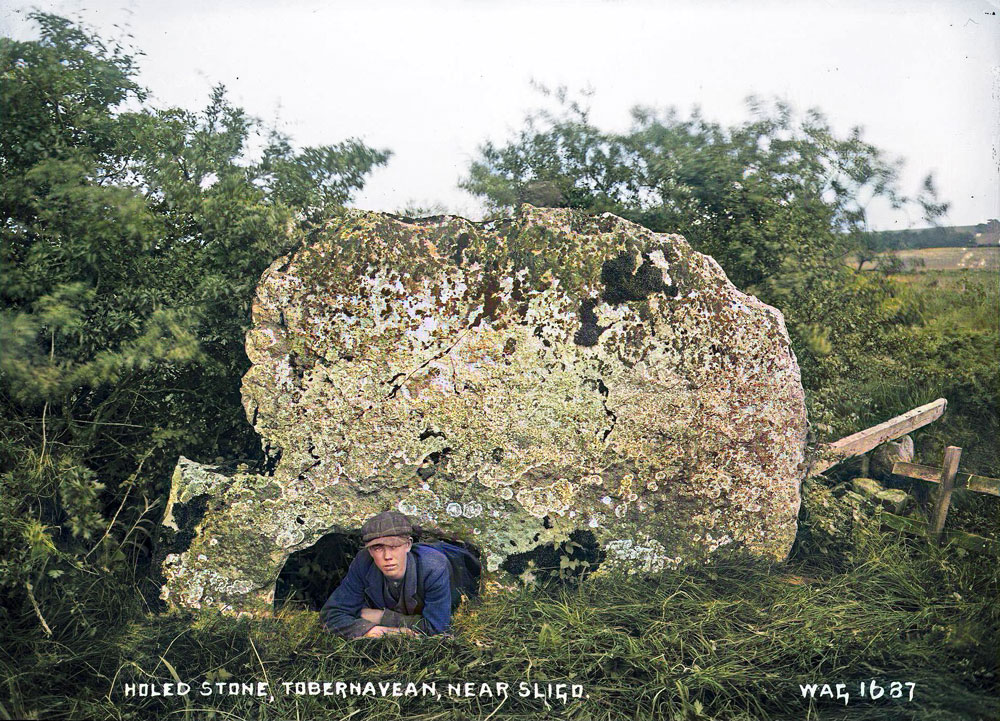
Image © National Museums of Northern Ireland.
Sligo antiquarian and author William Gregory Wood-Martin wrote a number of important books and histories of Sligo, as well as undertaking excavations at Carrowmore which were of quite a high standard. He had this to say about the Speckled Stone:
A most remarkable stone, which was undoubtedly, in olden time, used for the carrying out of some Pagan rite, marks the point of junction of the three parishes of the district formerly, and still by the country people designated Cuilirra, near the town of Sligo. It is a thin limestone flag set on edge; it measures 10 feet in breadth by 9 feet in height above ground; the little stream which issues from Tobernavean, i.e. the 'Well of the Warriors,' laves its base. Towards the east side, the flagstone is pierced by an oblong perforation, 3 feet in length by 2 feet in breadth. From its mottled appearance this slab is called the speckled,' also the 'grey stone.'
William Gregory Wood-Martin, Pagan Ireland.
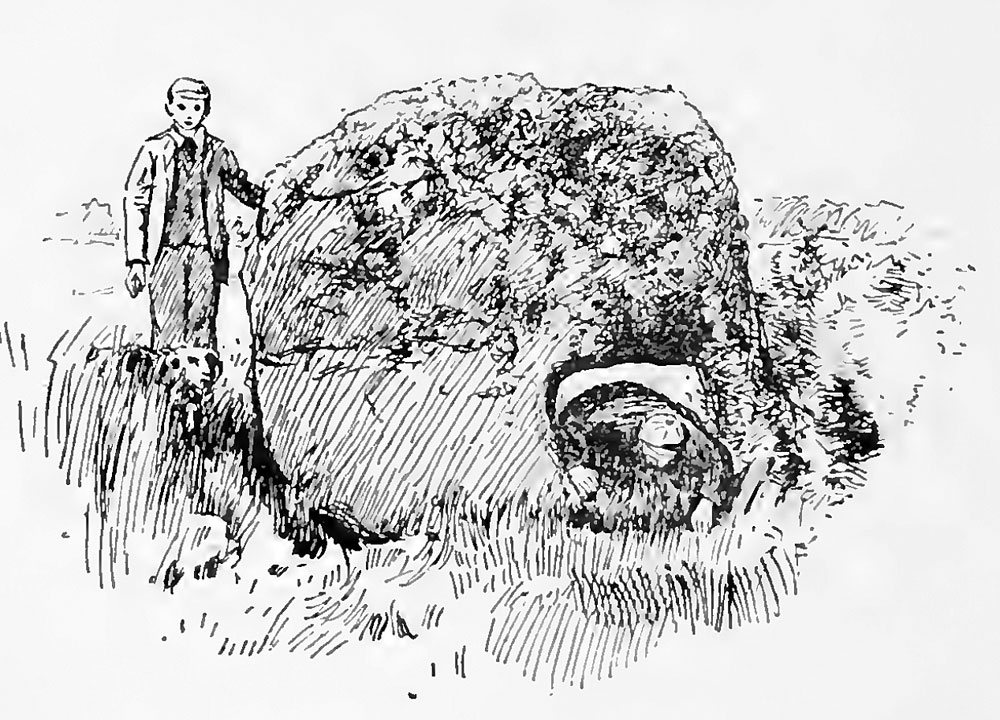
The name, 'An Cloch Breac' is very interesting, as 'speckled' is an ancient Irish word which is often associated with magic, portals and journeys to and from the Otherworld. Other local sites in the area have Speckled or Breac in their names are the Bricklieve Mountains (Breac Sliabh), Barnabrack (Speckled Gap), and Shee Reevagh—which means 'Dappled Fairy Mound', and, the most famous of all, the Cursing Stones on Inishmurray.
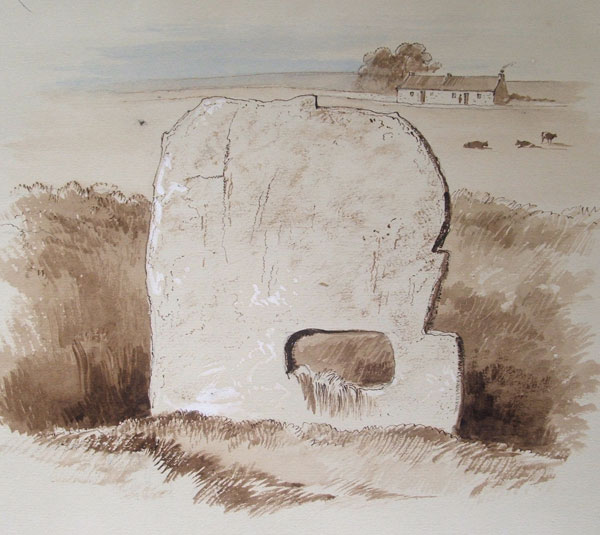
The monuments at Carrowmore, two kilometers up hill to the south, are clustered in a huge oval around the central site, Listoghil. A tail or trail of monuments lead off away from Carrowmore to the north, through a collection of bronze age barrows and spaced stone circles, almost like imitations fo the earlier neolithic passage-graves. The holed stone is not far from the very early causewayed enclosure at Magheraboy, which dates to 4,150 BCE. This line of monuments has led some researchers to suggest that the stone was part of a ceremonial entry way or path leading into Carrowmore ran through here.
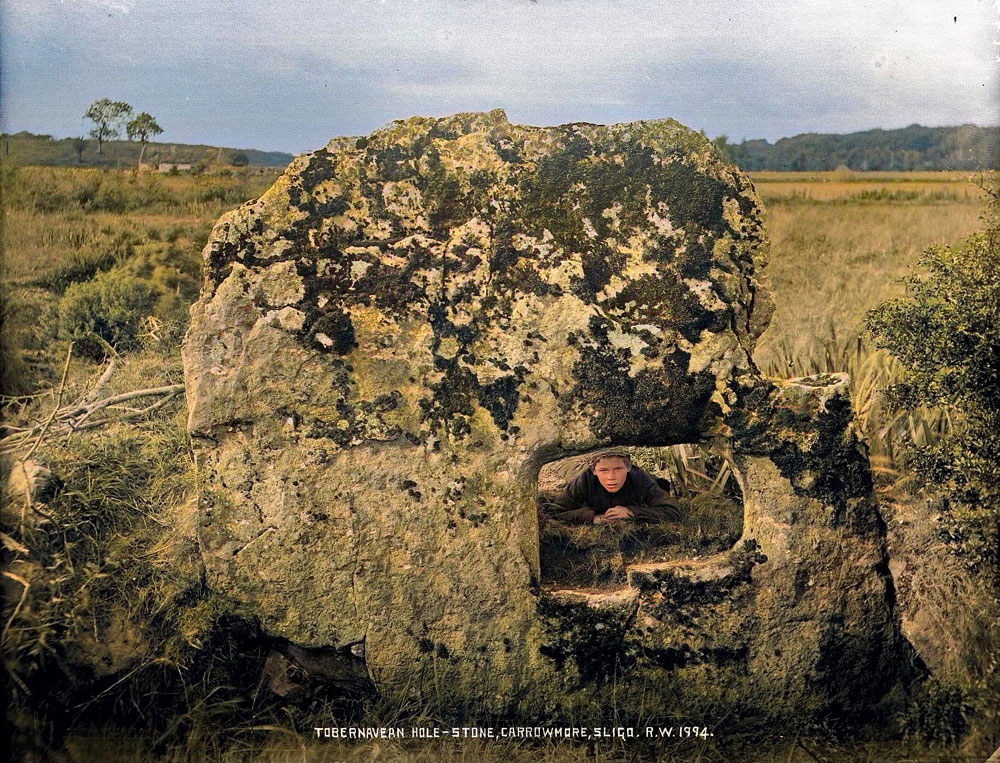
The stone is quite close to the Sligo - Knocknarea road, but access is extremely difficult; the site is on private property and is surrounded by several electric fences and drains, standing at a junction where two deep drains meet.
More information: Voices from the Dawn.

